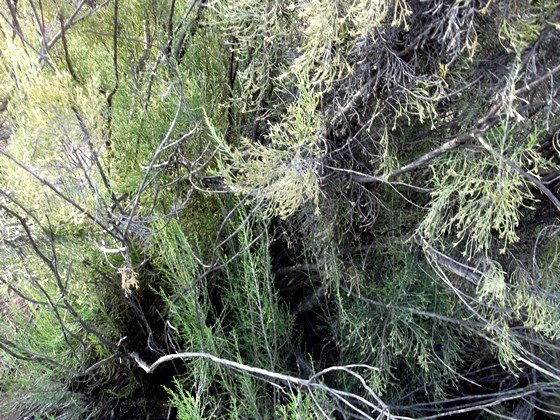Elytropappus rhinocerotis new and old

Author: Ivan Lätti
Photographer: Ivan Lätti
Young growth on Elytropappus rhinocerotis may be greener, the whitish, upper stems erect and initial branching little. Older branches lose colour from leaves going grey and direction from some curving of the stems.
Old stems gain body by adding lateral branchlets. In season they gain much from the covering of numerous, tiny, pale brown flowerheads. This, however, adds little in the line of aesthetic advantage.
Long, woody, bare stems, bigger and smaller, are visible all over the place on an old plant, the leaves not lasting on lower stem parts.
The soil where these plants grow usually drains well, the plants typically found in shale or sandstone. The roots go deep, accessing moisture well below the reach of much of the competition.
Succulents and bulbs are common in renosterveld. As geophytes, they store moisture for dry seasons, while plants like fynbos lose out in these conditions (Vlok and Schutte-Vlok, 2010; Bond and Goldblatt, 1984; iSpot; Wikipedia; www.plantsinstock.co.za).

